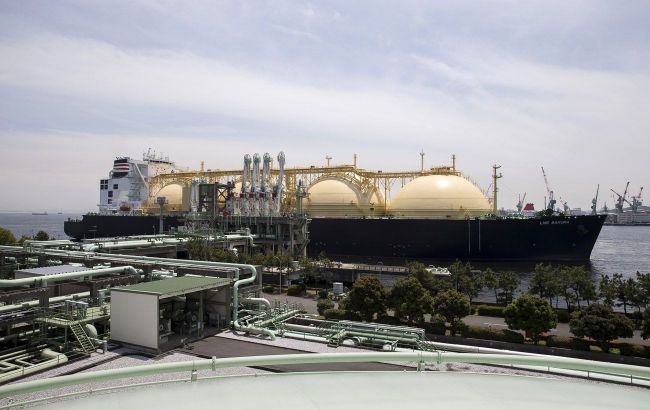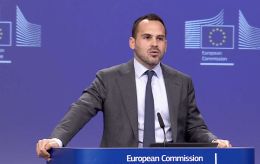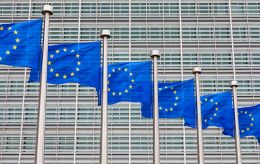Europe to phase out Russian LNG sooner than planned
 Photo: The EU will stop using Russian gas starting January 1, 2027 (Getty Images)
Photo: The EU will stop using Russian gas starting January 1, 2027 (Getty Images)
The European Commission will propose banning imports of Russian liquefied natural gas (LNG) by January 1, 2027, one year earlier than planned, reports Bloomberg.
According to sources, it will be done as part of the 19th package of sanctions against Moscow.
Gas phase-out
The European Union is preparing measures for an accelerated phase-out of Russian liquefied natural gas. The decision is being discussed just a few days after US President Donald Trump called on the EU to more actively restrict Moscow’s energy trade.
The European Commission is considering including in the new sanctions package a clause on halting imports of all Russian LNG earlier than the end of 2027. That date was originally the EU’s target. According to Bloomberg, the proposals could be presented as early as Friday, September 19.
RePowerEU and possible amendments
In addition to the sanctions package, there is also a possibility to accelerate the phase-out of Russian gas through amendments to the RePowerEU plan. This document was developed in 2022 to reduce dependence on Moscow’s energy.
“Since we presented the RePowerEU plan in 2022, we’ve been saying that a phaseout of Russian energy is better sooner rather than later,” noted European Commission spokesperson Anna-Kaisa Itkonen.
Pressure from the US
The Trump administration is urging Europe to reduce imports of Russian energy resources more quickly. Washington is also insisting on tariffs of up to 100% for India and China over their purchases of Russian oil.
However, many EU countries oppose such measures. Therefore, the European Commission has focused specifically on Russian LNG as the most realistic target for restrictions.
Market and supplies
According to forecasts, the global gas market will move into surplus in the second half of next year. This will reduce the risk of shortages for Europe and help avoid price spikes amid the phase-out of Russian gas.
The US has repeatedly expressed readiness to increase LNG supplies to Europe. In recent years, the EU has annually imported about 50 billion cubic meters of American gas, and the necessary infrastructure has been built in about 12 countries.
Contracts and EU plans
As part of a recent trade deal, the EU committed to purchasing $750 billion worth of energy resources from the US over three years. LNG supplies became a key element of this agreement.
Despite reduced gas flows from Russia after the invasion of Ukraine, in 2024, Russian gas still accounted for about 19% of the EU’s total imports. Spain, Belgium, and France remain the largest importers of LNG.
Political procedures
To include LNG in the sanctions package, unanimous approval of all EU member states is required. However, amendments under the RePowerEU plan can be adopted by a qualified majority vote.
“Europe has made huge efforts and been very successful in reducing our reliance on Russian energy and Russian gas,” said Eurogroup President Paschal Donohoe.
According to him, the European Commission intends to accelerate the reduction of dependence on Moscow, and efforts will be undertaken in this direction.
Since the start of the war against Ukraine, EU exports to Russia have fallen by 61%, while imports from Russia have dropped by 89%. Russia’s share in EU LNG imports decreased from 22% in the first quarter of 2021 to 14% in the second quarter of 2025. The US became the largest LNG supplier, providing 54% of imports.
The US insists that G7 countries impose tariffs of up to 100% against China and India for buying Russian oil. Washington believes this should push Vladimir Putin to negotiate with Kyiv.

